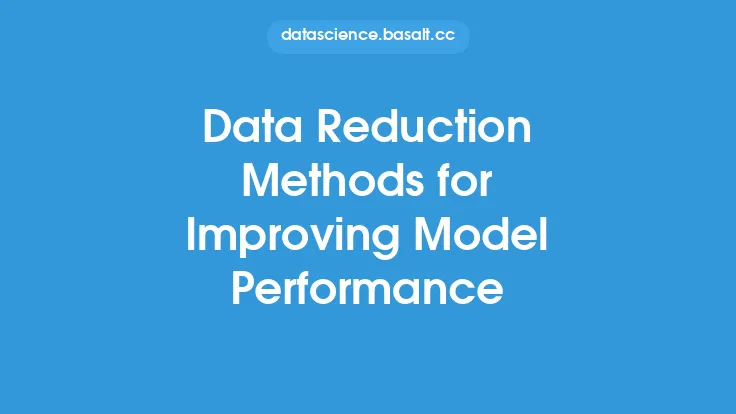Dimensionality reduction is a crucial step in the data mining process, as it enables the transformation of high-dimensional data into a lower-dimensional representation, making it easier to analyze and visualize. This process helps to reduce the complexity of the data, improve model performance, and enhance data interpretation. There are several dimensionality reduction methods, each with its strengths and weaknesses, and the choice of method depends on the nature of the data and the goals of the analysis.
Introduction to Dimensionality Reduction
Dimensionality reduction involves reducing the number of features or dimensions in a dataset while preserving the most important information. This is often necessary because high-dimensional data can be difficult to visualize and analyze, and may lead to the curse of dimensionality, where the number of features exceeds the number of samples. Dimensionality reduction methods can be broadly categorized into feature selection and feature extraction methods. Feature selection involves selecting a subset of the most relevant features, while feature extraction involves transforming the original features into a new set of features that are more informative.
Types of Dimensionality Reduction Methods
There are several types of dimensionality reduction methods, including linear and non-linear methods. Linear methods, such as Principal Component Analysis (PCA) and Linear Discriminant Analysis (LDA), assume a linear relationship between the features and are effective for reducing the dimensionality of datasets with a small number of features. Non-linear methods, such as t-Distributed Stochastic Neighbor Embedding (t-SNE) and Autoencoders, can capture non-linear relationships between features and are effective for reducing the dimensionality of high-dimensional datasets.
Principal Component Analysis (PCA)
PCA is a widely used dimensionality reduction method that transforms the original features into a new set of orthogonal features, called principal components, which capture the most variance in the data. The first principal component captures the most variance, and each subsequent component captures less variance. By selecting the top k principal components, the dimensionality of the data can be reduced from n features to k features.
Linear Discriminant Analysis (LDA)
LDA is a supervised dimensionality reduction method that seeks to find linear combinations of features that best separate classes of data. LDA is commonly used for classification problems and is effective for reducing the dimensionality of datasets with a small number of features. LDA assumes that the classes have a Gaussian distribution and that the classes are linearly separable.
Non-Linear Dimensionality Reduction Methods
Non-linear dimensionality reduction methods, such as t-SNE and Autoencoders, are effective for reducing the dimensionality of high-dimensional datasets. t-SNE is a non-linear method that maps the data to a lower-dimensional space in a way that preserves the local structure of the data. Autoencoders are neural networks that learn to compress and reconstruct the data, and can be used for dimensionality reduction by training the network to reconstruct the data from a lower-dimensional representation.
Choosing the Right Dimensionality Reduction Method
The choice of dimensionality reduction method depends on the nature of the data and the goals of the analysis. For datasets with a small number of features, linear methods such as PCA and LDA may be effective. For high-dimensional datasets, non-linear methods such as t-SNE and Autoencoders may be more effective. It is also important to consider the computational complexity of the method and the interpretability of the results. Ultimately, the choice of method will depend on the specific requirements of the project and the characteristics of the data.





